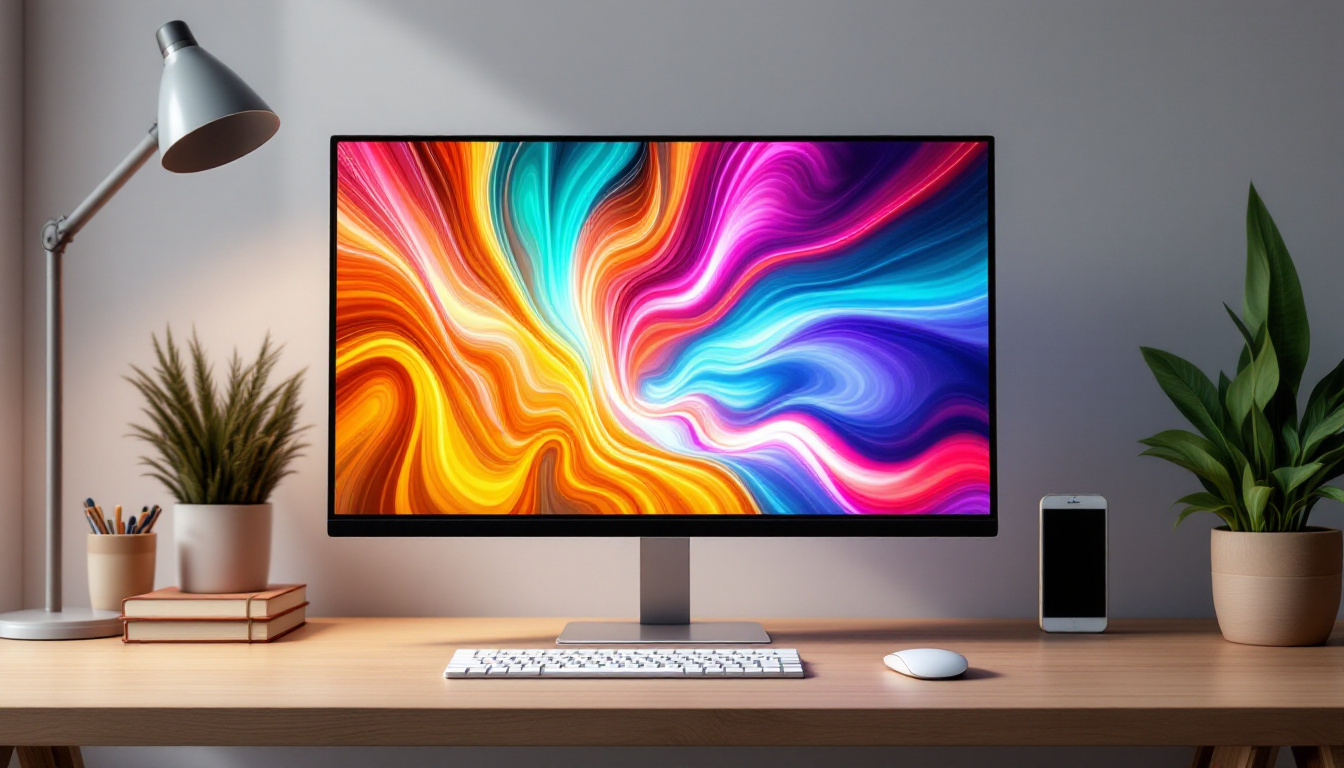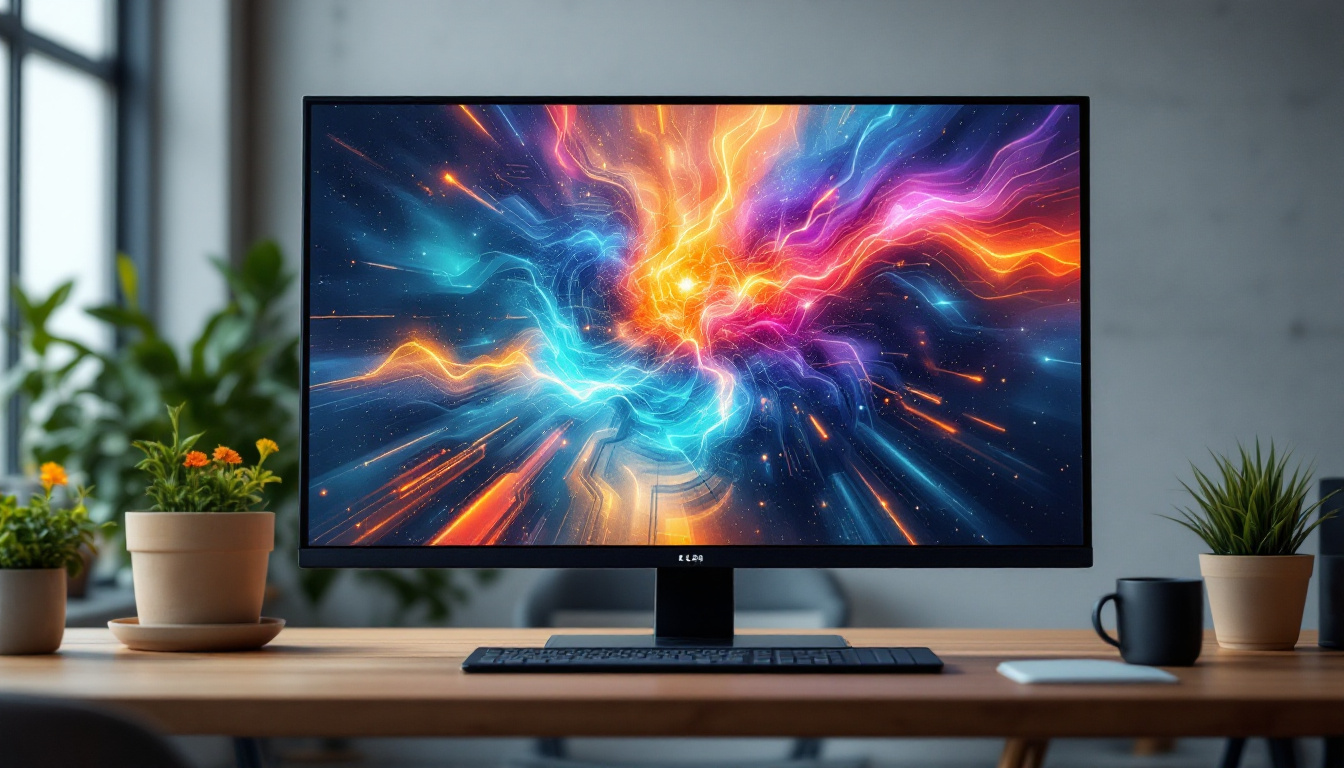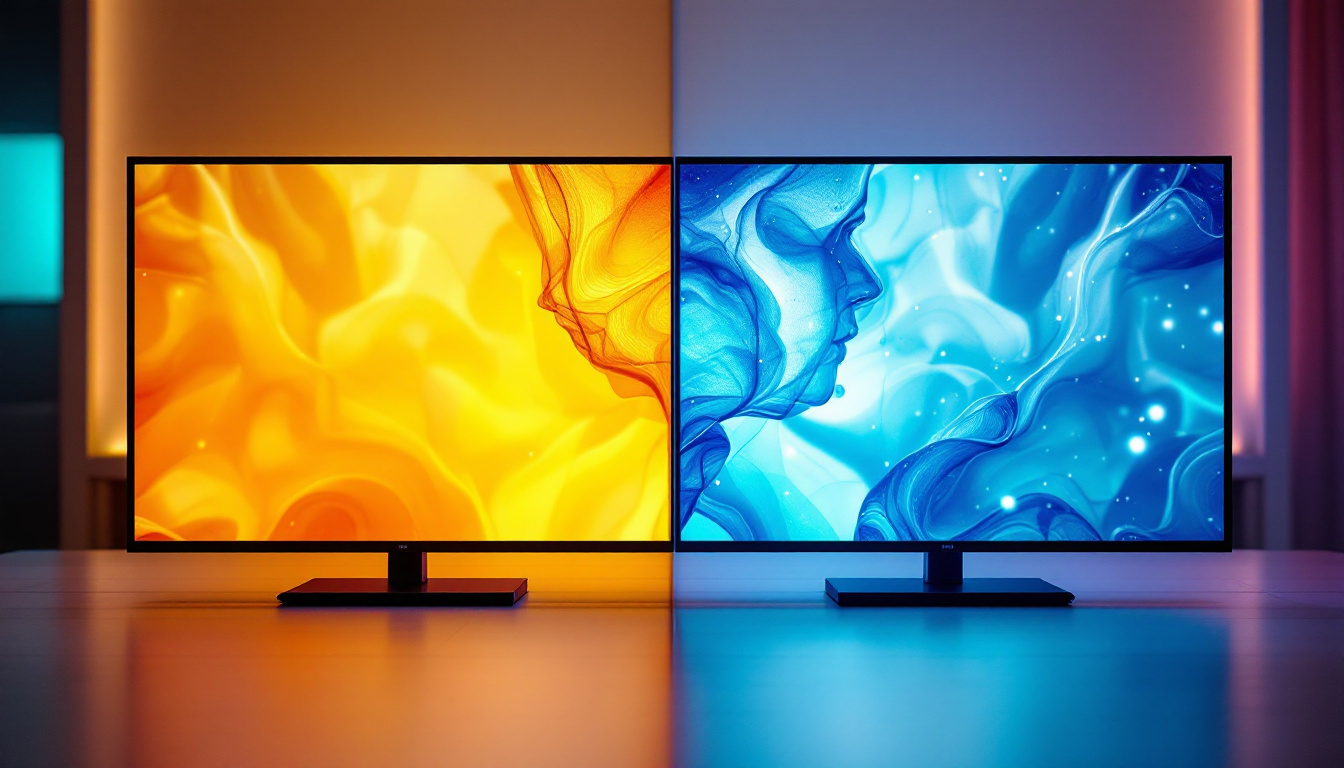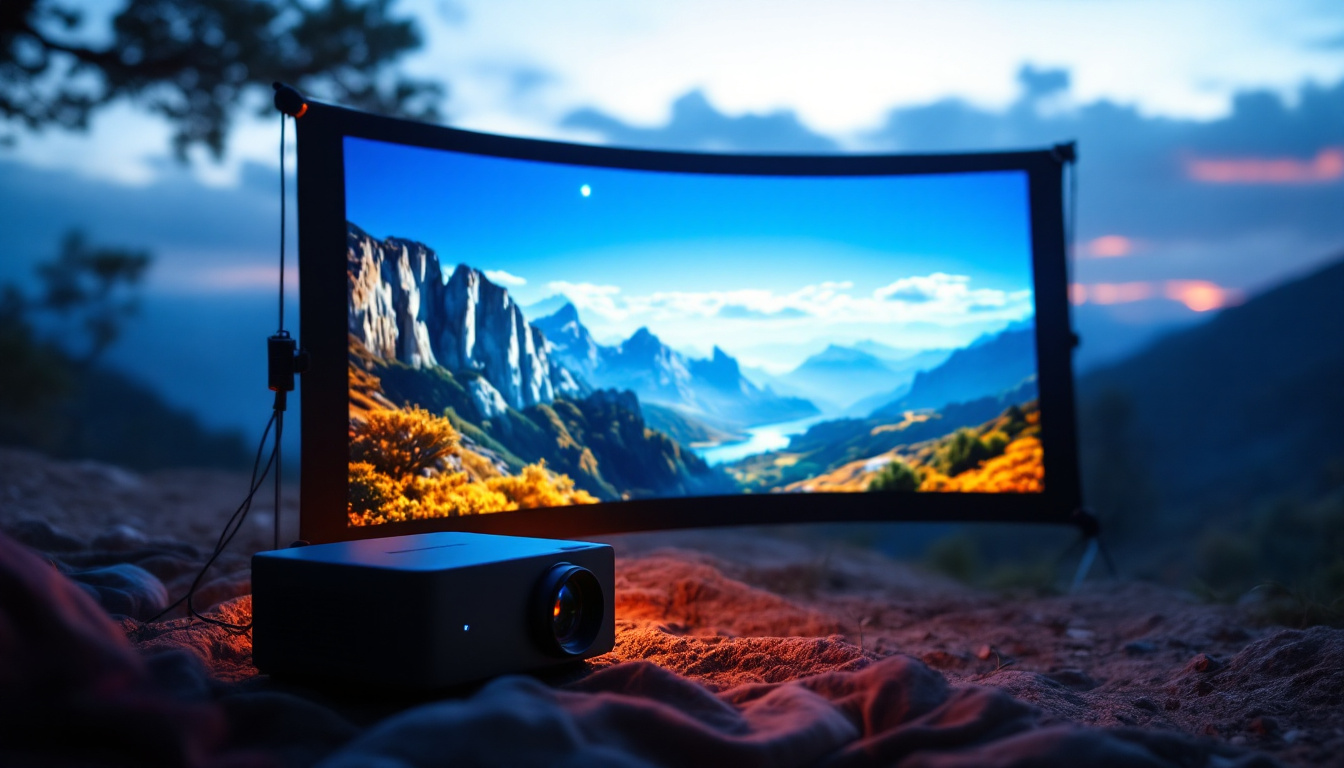How High Should My TV Be On The Wall: LED Display Explained
Choosing the right height for mounting a television can significantly enhance the viewing experience. While it may seem like a straightforward decision, several factors come into play when determining the optimal height for your LED display. This article delves into the considerations for wall-mounted TVs, the recommended heights, and tips for achieving the best setup.
Understanding Viewing Angles
Before deciding on the height for your TV, it’s essential to understand the concept of viewing angles. The ideal viewing angle can affect how comfortable and enjoyable your viewing experience will be. A well-positioned television will minimize neck strain and provide a clear picture from various seating positions. Viewing angles can vary significantly depending on the type of display technology used, such as LCD, LED, or OLED, each of which may have different optimal viewing characteristics. For instance, OLED screens typically offer better color accuracy and contrast from wider angles compared to traditional LED screens, making placement even more critical for achieving the best visual experience.
Optimal Viewing Height
The general rule of thumb for mounting a TV is to have the center of the screen at eye level when seated. For most people, this height is approximately 42 to 48 inches from the floor to the center of the screen. However, this can vary based on the height of your furniture and the size of the TV. It is also worth noting that different activities may require adjustments; for example, if you often watch TV while lying down or in a reclined position, you might want to consider a slightly lower mounting height to accommodate that posture.
When determining the optimal height, consider the distance from the seating area to the TV. A larger screen may require a slightly higher mounting position to ensure that the viewer can comfortably see the entire display without straining their neck. As a guideline, the distance between the viewer and the screen should be about 1.5 to 2.5 times the diagonal size of the TV. This not only enhances the viewing experience but also helps in preventing eye fatigue during long viewing sessions.
Consider the Room Layout
The layout of the room plays a crucial role in determining the correct height for your TV. Factors such as the height of the sofa, the distance from the TV, and the overall design of the room should all be taken into account. For instance, if the seating is lower to the ground, mounting the TV higher on the wall may be necessary to maintain a comfortable viewing angle. Moreover, the arrangement of windows and light sources can also influence how you position your TV; glare from sunlight can detract from the viewing experience, so consider these elements when selecting a height.
Additionally, consider the placement of other furniture and fixtures in the room. Avoid mounting the TV too high if it will be viewed primarily from a seated position, as this can lead to discomfort over extended viewing periods. It may also be beneficial to create a focal point in the room by aligning the TV with other key pieces of furniture, such as a fireplace or a central coffee table, to enhance the overall aesthetic and functionality of the space. By carefully evaluating these factors, you can create a more harmonious and enjoyable viewing environment that caters to your lifestyle and preferences.
Factors Influencing TV Height
Several factors can influence how high a TV should be mounted on the wall. Understanding these factors can help in making a more informed decision. Here are some key considerations:
TV Size
The size of the TV is a significant factor in determining its mounting height. Larger screens may need to be mounted higher to ensure that viewers can see the entire display comfortably. A common guideline is to mount the TV so that the bottom of the screen is about 24 to 30 inches above the floor, depending on the screen size.
For instance, a 55-inch TV may be best positioned higher than a 32-inch model, as the larger screen requires a more elevated viewing angle to avoid distortion and ensure clarity. Additionally, the resolution of the TV can also play a role; 4K TVs, for example, allow for closer viewing distances without sacrificing image quality, which might influence how high you choose to mount them.
Room Functionality
Consider the primary function of the room where the TV will be mounted. If it’s a family room where people gather to watch movies, a lower height may be preferred for a more immersive experience. Conversely, in a formal living room where the TV is not the central focus, a higher mount might be acceptable.
Additionally, if the TV will be used for gaming or sports viewing, it may be beneficial to mount it at a height that allows for a more engaging experience, especially if multiple viewers are involved. The seating arrangement is another vital consideration; for instance, if you have a sectional couch, the height of the TV should accommodate the various seating positions to ensure that everyone has a good view. Moreover, the distance from the seating to the screen should also be taken into account, as this can affect the overall viewing experience.
Wall Type and Mounting Options
The type of wall on which the TV will be mounted can also influence the height. For example, if the wall is made of drywall, it’s crucial to locate the studs for secure mounting. If the wall has a fireplace or other architectural features, these elements may dictate a higher or lower mounting position.
Furthermore, the type of mount used can affect the height as well. Fixed mounts, tilting mounts, and full-motion mounts all have different height requirements and capabilities. A tilting mount can allow for a higher installation while still providing a comfortable viewing angle. It’s also worth noting that full-motion mounts offer the flexibility to adjust the angle and height after installation, which can be particularly useful in multi-purpose rooms where the viewing position may change frequently. Additionally, considering cable management options is essential; a well-organized setup not only looks cleaner but also ensures that the TV height complements the overall aesthetic of the room.
Recommended Heights for Different Scenarios
While the general guidelines provide a starting point, specific scenarios may require different mounting heights. Here are some recommendations based on various situations:
Living Room Setup
For a typical living room setup, the ideal height for a TV is generally between 42 to 48 inches from the floor to the center of the screen. This height accommodates most seating arrangements and allows for a comfortable viewing angle.
If the seating is particularly low, consider mounting the TV closer to 42 inches. Conversely, if the seating is elevated, such as in a theater-style setup, a height closer to 48 inches may be more appropriate.
Bedroom Setup
In a bedroom, the TV may be mounted slightly lower, typically around 36 to 42 inches from the floor. This height allows for comfortable viewing from a bed while minimizing glare from windows and other light sources.
When mounting a TV in a bedroom, consider the angle at which viewers will be watching. If the bed is elevated, a higher mounting position may be necessary to ensure a clear line of sight.
Home Theater Setup
A dedicated home theater often allows for more flexibility in TV height. In this scenario, the center of the screen should ideally be at eye level when seated, which may be around 36 to 48 inches depending on the seating arrangement.
For larger screens, consider a slightly higher mounting position to enhance the immersive experience. Additionally, ensure that the seating is arranged to maximize the viewing angle, as this can significantly impact the overall enjoyment of the space.
Tips for Achieving the Perfect Height
Achieving the perfect height for your TV involves careful planning and consideration. Here are some practical tips to help ensure that your TV is mounted at the ideal height:
Measure and Mark
Before mounting the TV, take the time to measure and mark the desired height on the wall. Use a level to ensure that the markings are straight. This step is crucial for achieving a professional-looking installation.
Consider using a tape measure to determine the height from the floor to the center of the screen. Mark this point clearly, and double-check your measurements to avoid any mistakes during installation.
Test Viewing Angles
Before finalizing the height, it may be beneficial to test the viewing angles. Use a cardboard cutout or a similar object to represent the size of the TV and place it at the proposed height. Sit in your usual viewing position to see if the angle feels comfortable.
This test can help identify any potential issues before committing to the installation, allowing for adjustments if necessary.
Consider Cable Management
When mounting a TV, consider how cables will be managed. A clean and organized setup not only looks better but also prevents damage to cables and reduces clutter. Plan for cable management solutions that can hide wires and maintain a tidy appearance.
Wall-mounted cable management systems or conduits can be effective in keeping cables out of sight while ensuring easy access for future adjustments or replacements.
Conclusion
Determining the ideal height for mounting a TV involves careful consideration of various factors, including viewing angles, room layout, and the size of the television. By following the guidelines and recommendations outlined in this article, you can create a comfortable and enjoyable viewing experience.
Whether it’s for a living room, bedroom, or dedicated home theater, taking the time to measure, test, and plan will ensure that your TV is mounted at the perfect height. Ultimately, the goal is to enhance your viewing experience while maintaining a stylish and functional space.
Enhance Your Viewing Experience with LumenMatrix
Ready to take your viewing experience to the next level? LumenMatrix offers a wide range of cutting-edge LED display solutions that can transform any space into a dynamic visual environment. From immersive Indoor LED Wall Displays to vibrant Outdoor LED Wall Displays, our technology is designed to captivate and engage. Discover how our innovative LED displays can elevate your home theater, living room, or business setting. Check out LumenMatrix LED Display Solutions today and see the difference for yourself!






























